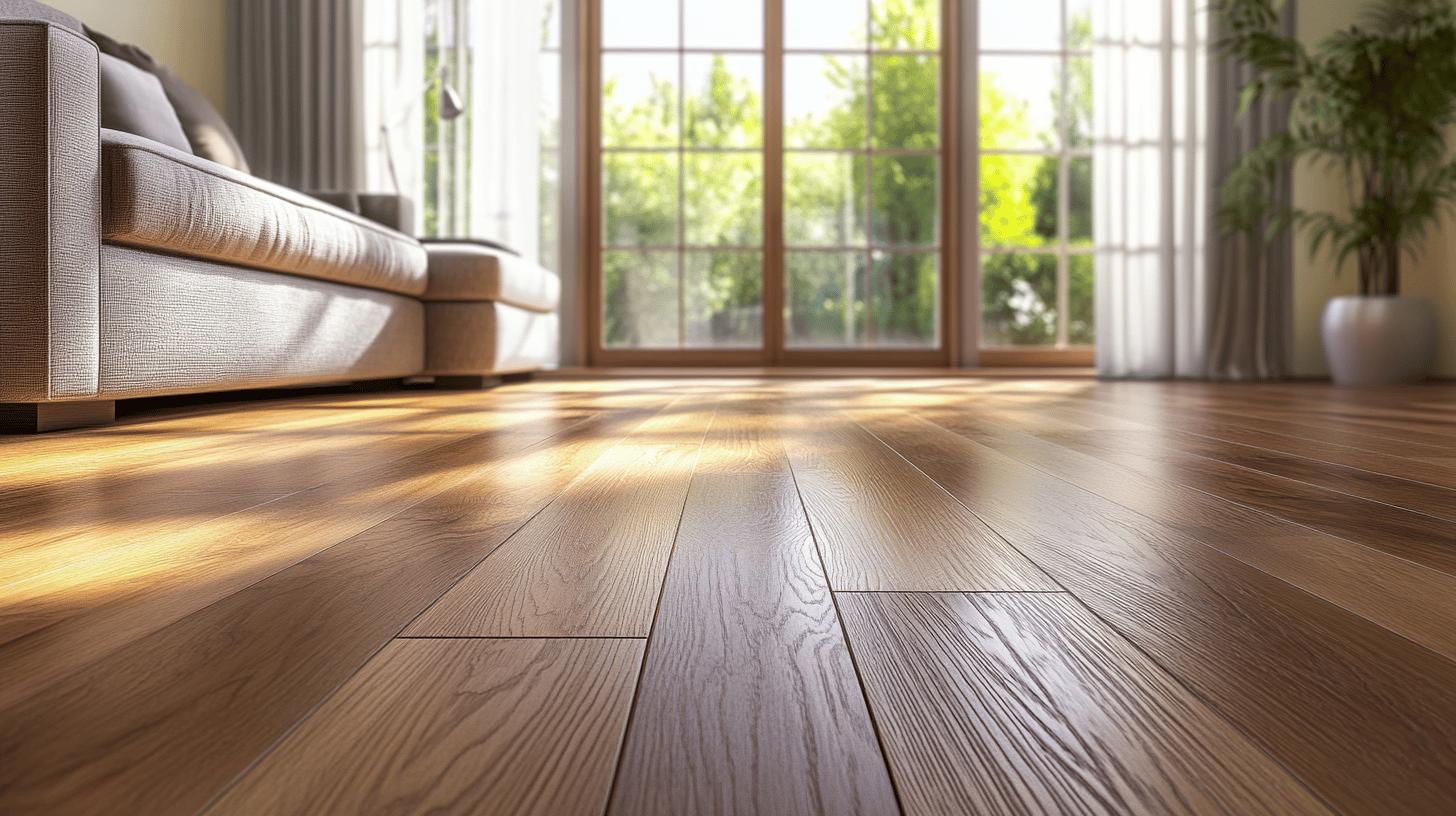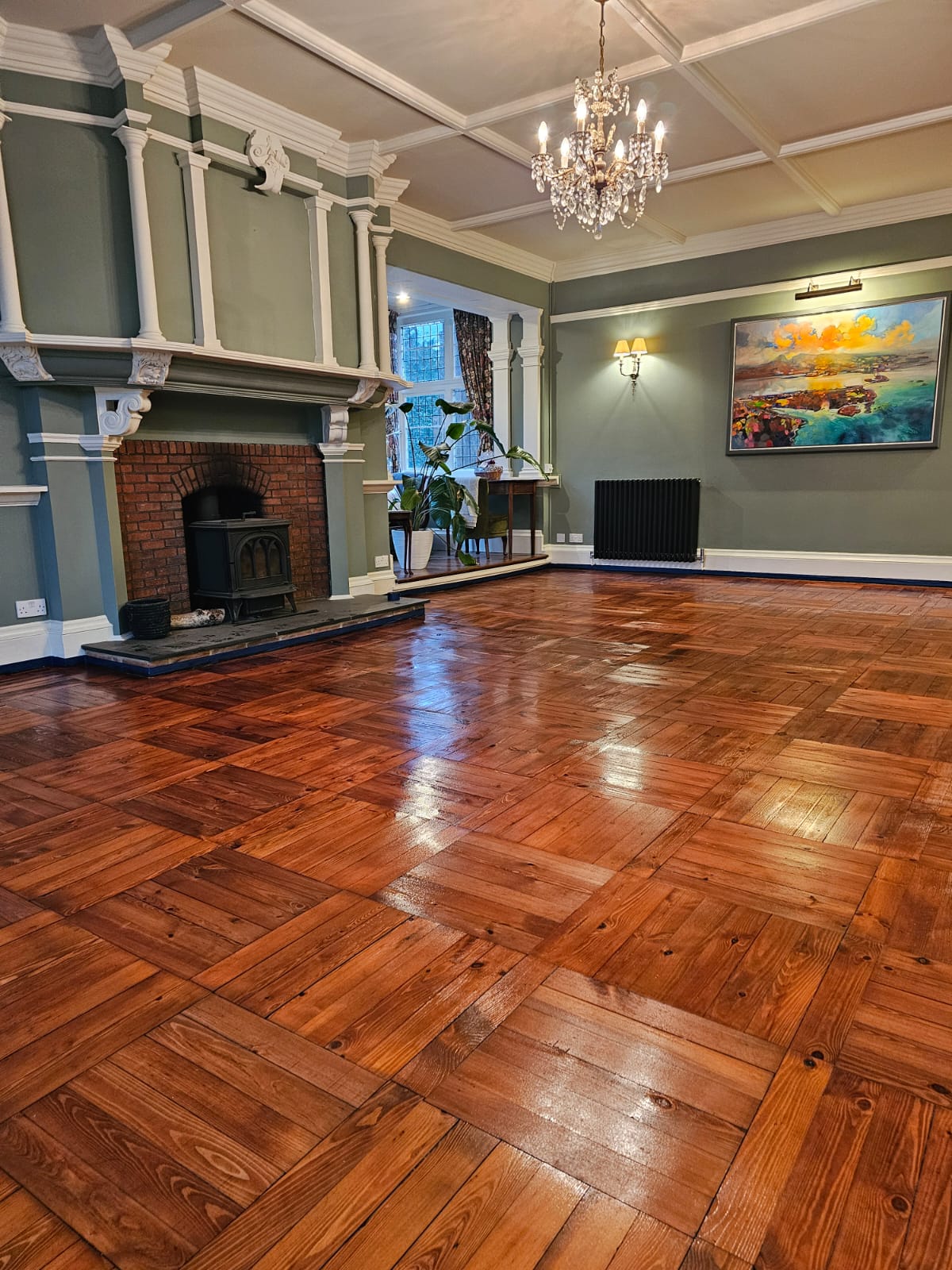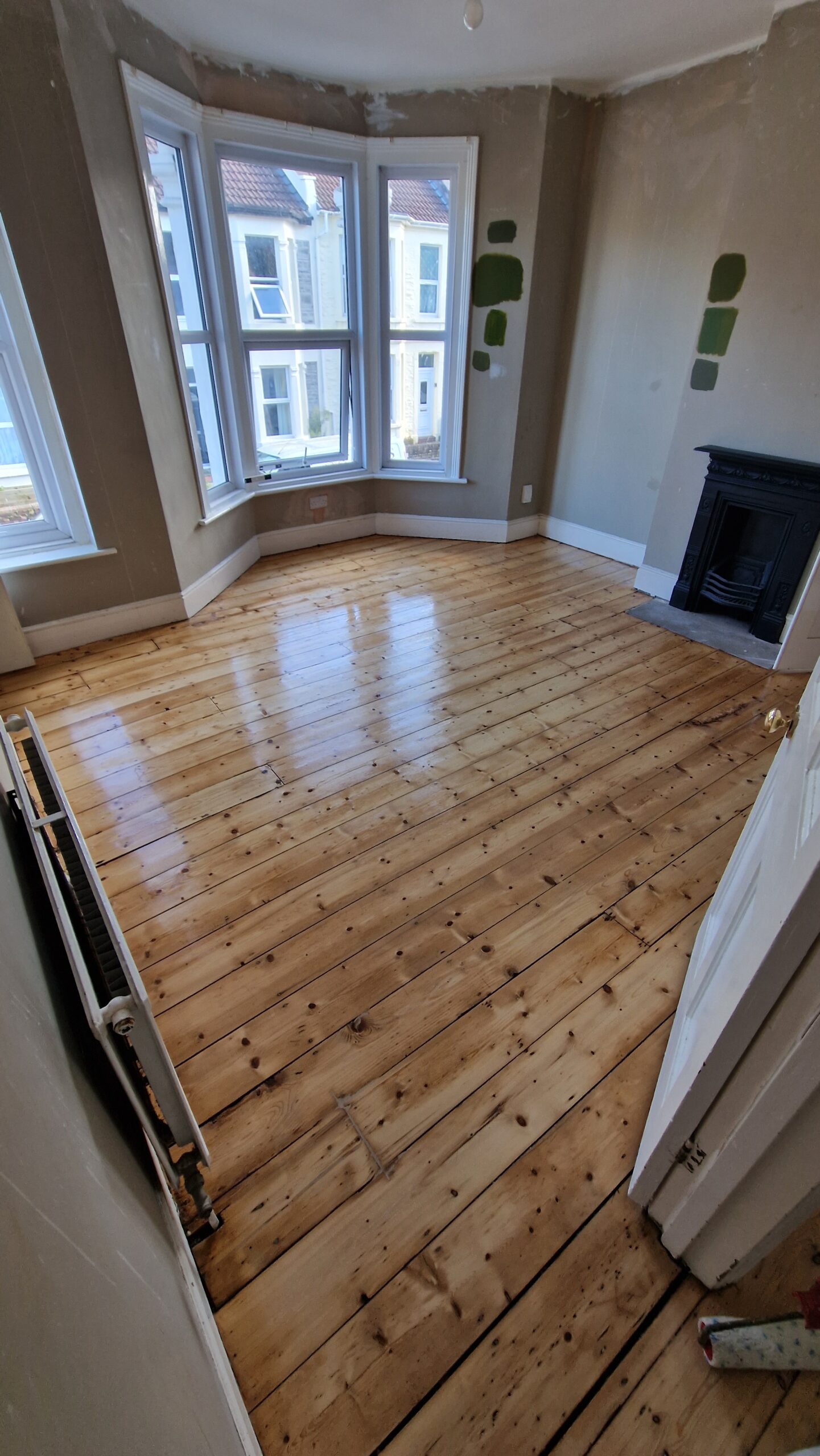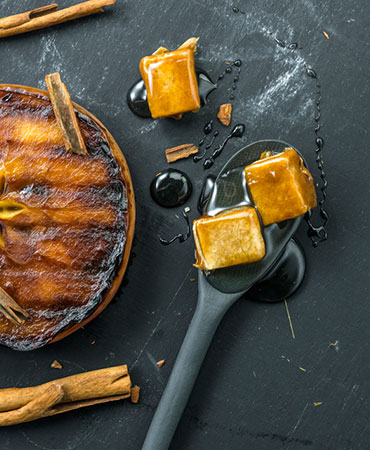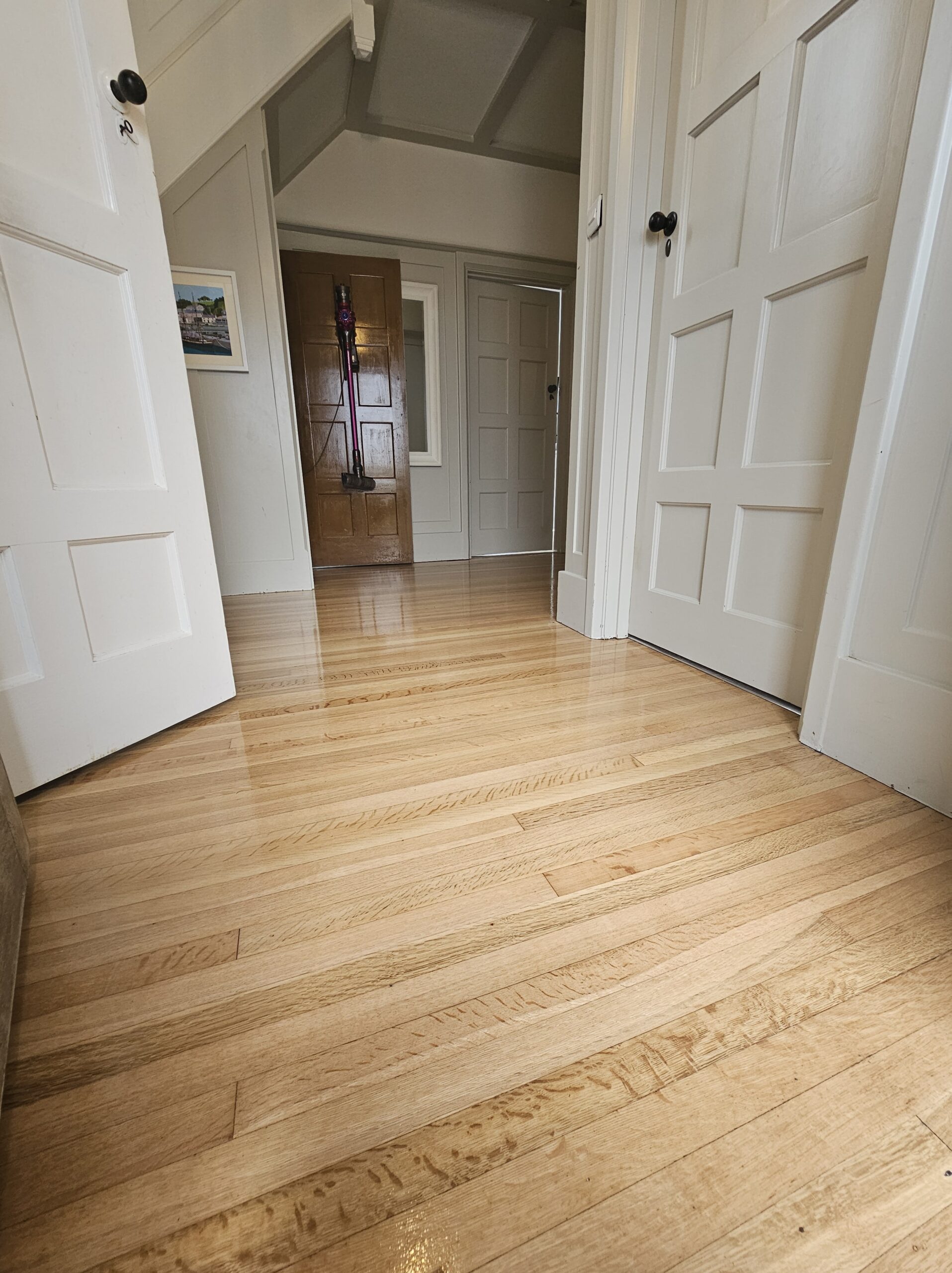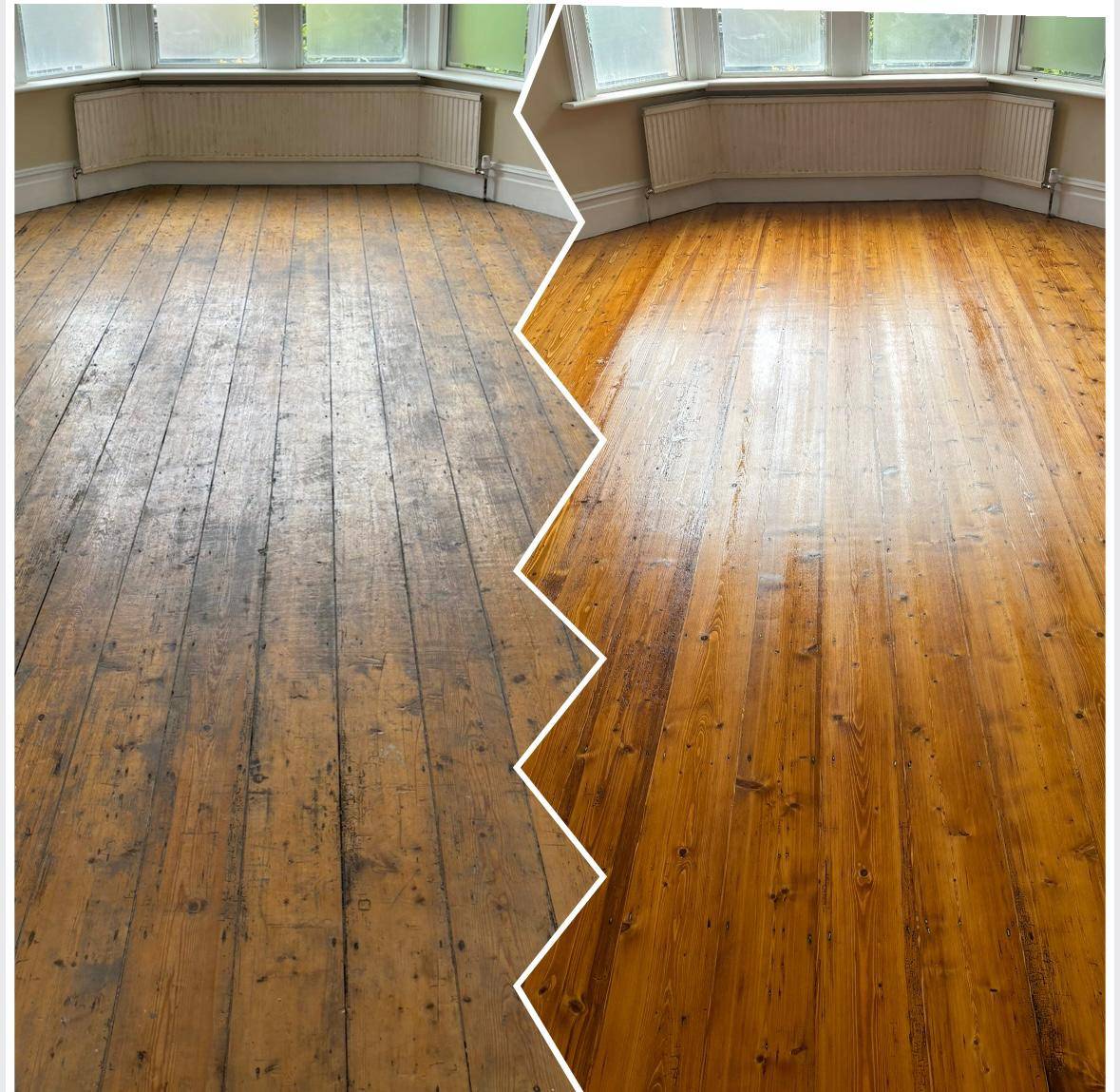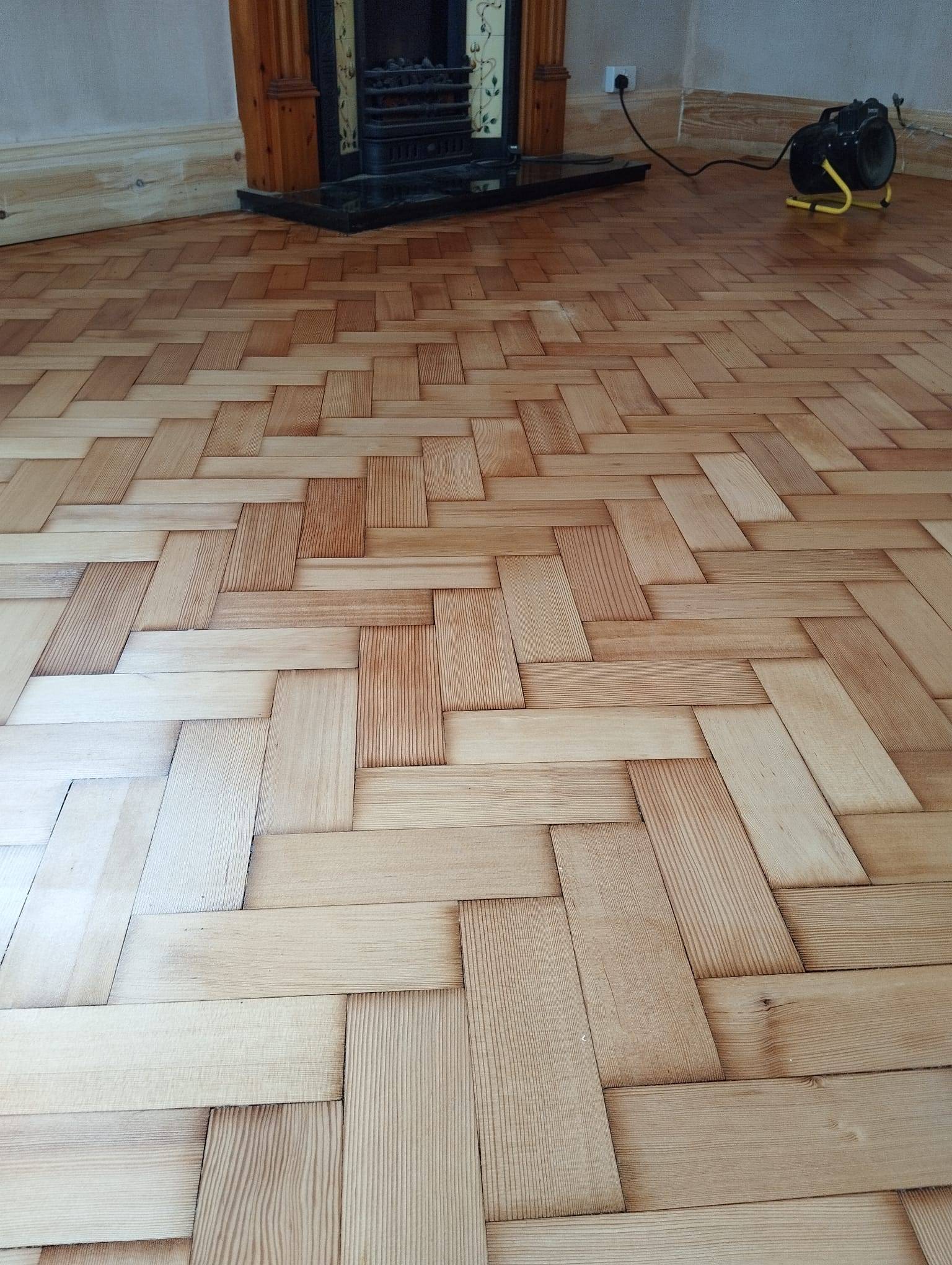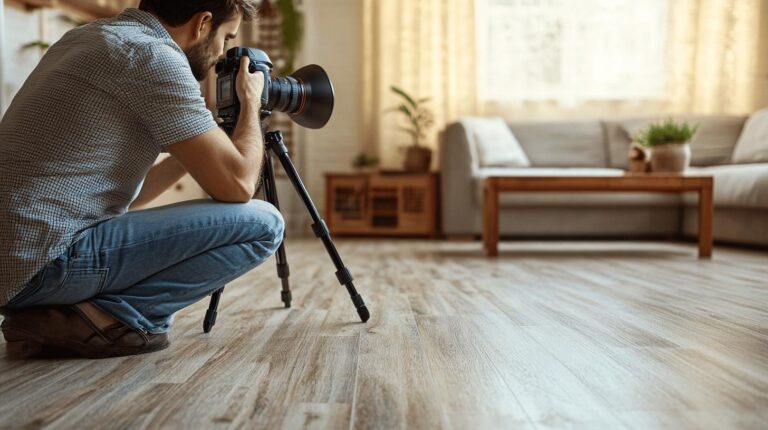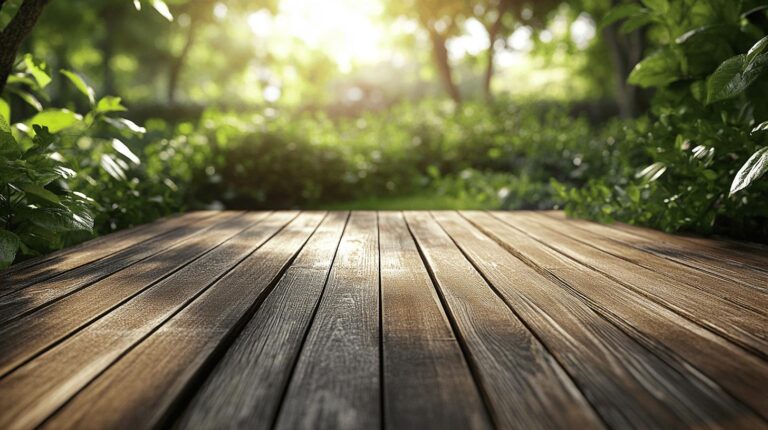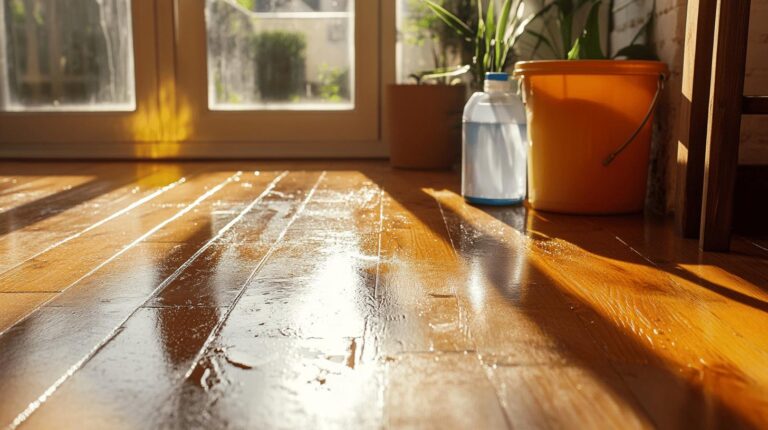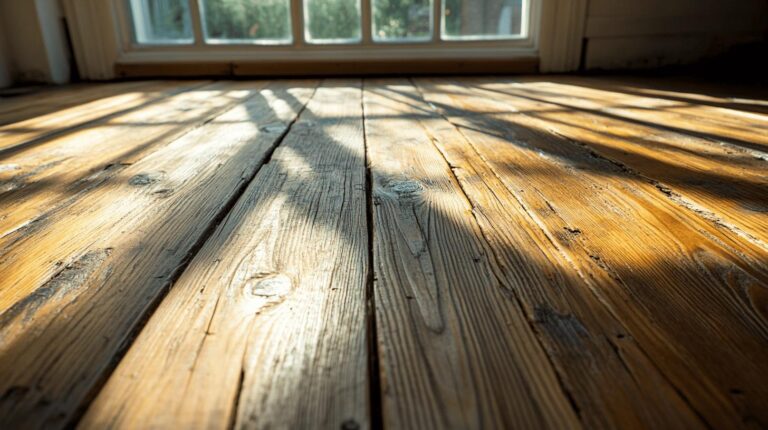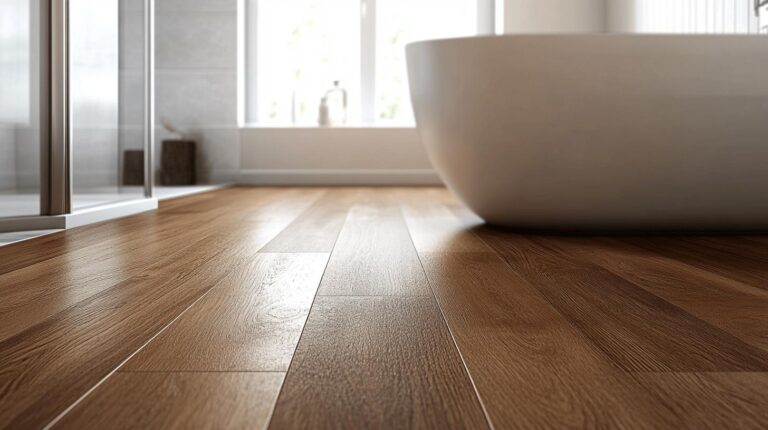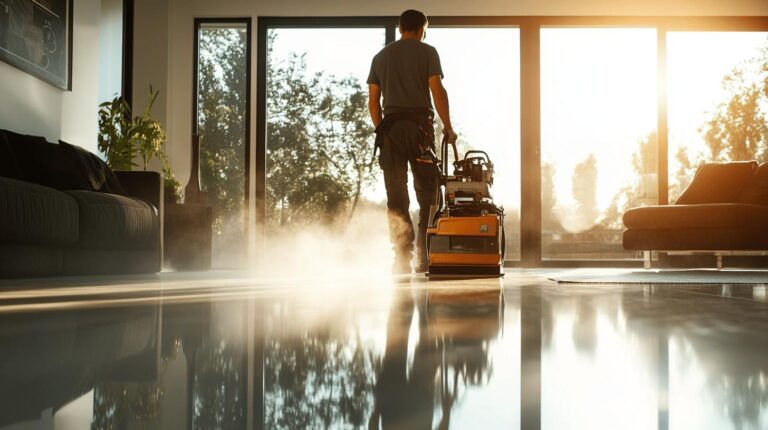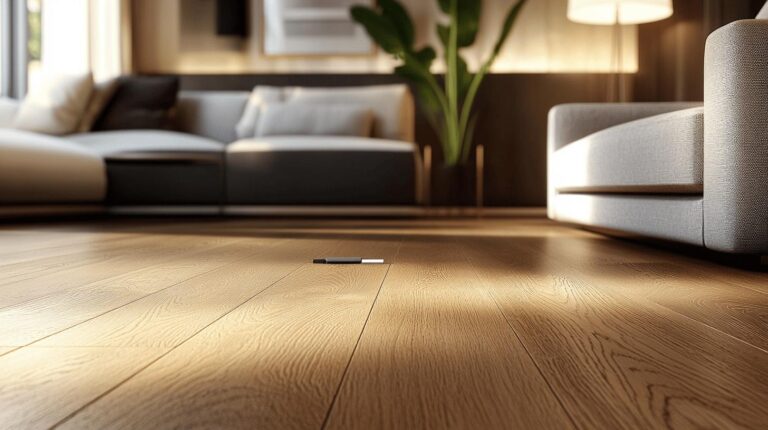Choosing the right finish for your wooden floors can greatly impact their durability, maintenance, and appearance. But with so many options available, how do you determine the best one for your home? Will a high-gloss lacquer offer the sleek style you desire, or will the natural charm of hardwax oil better suit your needs? In this guide, Ryan’s Restoration delves into different types of wood floor polishing and finishes, dissecting their strengths and weaknesses. Whether you seek durability, aesthetics, or eco-friendliness, discover the perfect finish to enhance and protect your wooden floors.
Understanding Different Types of Wooden Floor Finishes
Choosing the right floor finish is essential for both the appearance and longevity of wooden floors. Different finishes offer varying levels of durability, aesthetics, and maintenance requirements, making it crucial to understand their unique properties.
Polyurethane Finish is highly durable and comes in both oil-based and water-based forms. Oil-based polyurethane is known for its superior durability and a rich, amber hue, but it emits stronger fumes and has a longer drying time. Water-based polyurethane, on the other hand, has lower VOC emissions, dries quickly, and maintains the wood’s natural colour, though it may not be as tough as its oil-based counterpart.
Hardwax Oil combines the benefits of oil and wax, providing a natural look while forming a water-resistant surface. This finish is easier to maintain and allows for spot repairs, making it a practical choice for those who want both beauty and functionality. The finish enhances the wood grain and adds a warm, inviting glow to the floor.
Shellac is a natural finish that dries quickly and imparts a warm, amber tone to the wood. However, it is less durable compared to other finishes and is susceptible to damage from water and alcohol. Shellac is often used for antique or decorative pieces where the emphasis is on appearance rather than heavy-duty use.
Lacquer offers a high-gloss finish and dries rapidly. While it can create a sleek and polished look, lacquer is less durable and prone to scratching and yellowing over time. It is suitable for areas with lower foot traffic where aesthetics are a priority.
Oil and Wax is a traditional finish that gives a soft, natural appearance to wooden floors. It requires regular maintenance and reapplication, but it is appreciated for its ability to enhance the natural beauty of the wood. This finish is particularly favoured for its eco-friendliness and the ease with which it can be touched up.
- Polyurethane Finish: Highly durable, oil-based and water-based, strong fumes for oil-based, quick-drying for water-based.
- Hardwax Oil: Combines oil and wax, natural look, water-resistant, easy maintenance, spot-repairable.
- Shellac: Natural, quick-drying, warm amber tone, less durable, susceptible to water and alcohol damage.
- Lacquer: High-gloss finish, quick-drying, less durable, prone to scratching, yellowing over time.
- Oil and Wax: Traditional finish, soft and natural look, requires regular maintenance, eco-friendly, easy to touch up.
Pros and Cons of Popular Wood Floor Finishes
When selecting the best finish for your wooden floors, understanding the pros and cons of each option is essential. Different finishes offer varying levels of durability, aesthetic appeal, and maintenance requirements, which can significantly impact your choice.
Oil finishes are known for enhancing the natural grain of the wood and providing a warm glow. They are easier to touch up compared to other finishes, making them ideal for minor repairs. However, oil finishes require more frequent maintenance and reapplication, which can be a drawback for those seeking a low-maintenance option.
Lacquer finishes offer a sleek, polished appearance and are highly durable, making them suitable for high-traffic areas. The downside is that lacquer finishes are difficult to repair once damaged. They can also be prone to scratching and yellowing over time, which may affect their long-term appeal.
Polyurethane finishes provide a strong protective layer and are available in various sheens, from satin to high gloss. They are highly durable, with oil-based versions offering superior toughness but longer drying times. Water-based polyurethane dries quickly and has lower VOC emissions, though it may not be as robust as the oil-based variant.
Shellac finishes dry quickly and impart a warm, amber tone to the wood. However, they are less durable and susceptible to damage from water and alcohol. Shellac is often used for decorative pieces or antique furniture rather than high-traffic floors due to its vulnerability.
| Finish Type | Pros | Cons |
|---|---|---|
| Oil | Enhances natural grain, warm glow, easy touch-up | Frequent maintenance, reapplication needed |
| Lacquer | Highly durable, sleek appearance | Difficult to repair, prone to scratching and yellowing |
| Polyurethane | Strong protective layer, various sheens, durable | Oil-based has longer drying times, water-based less tough |
| Shellac | Quick drying, warm tone | Less durable, susceptible to water and alcohol damage |
How to Choose the Best Finish for Your Wooden Floors
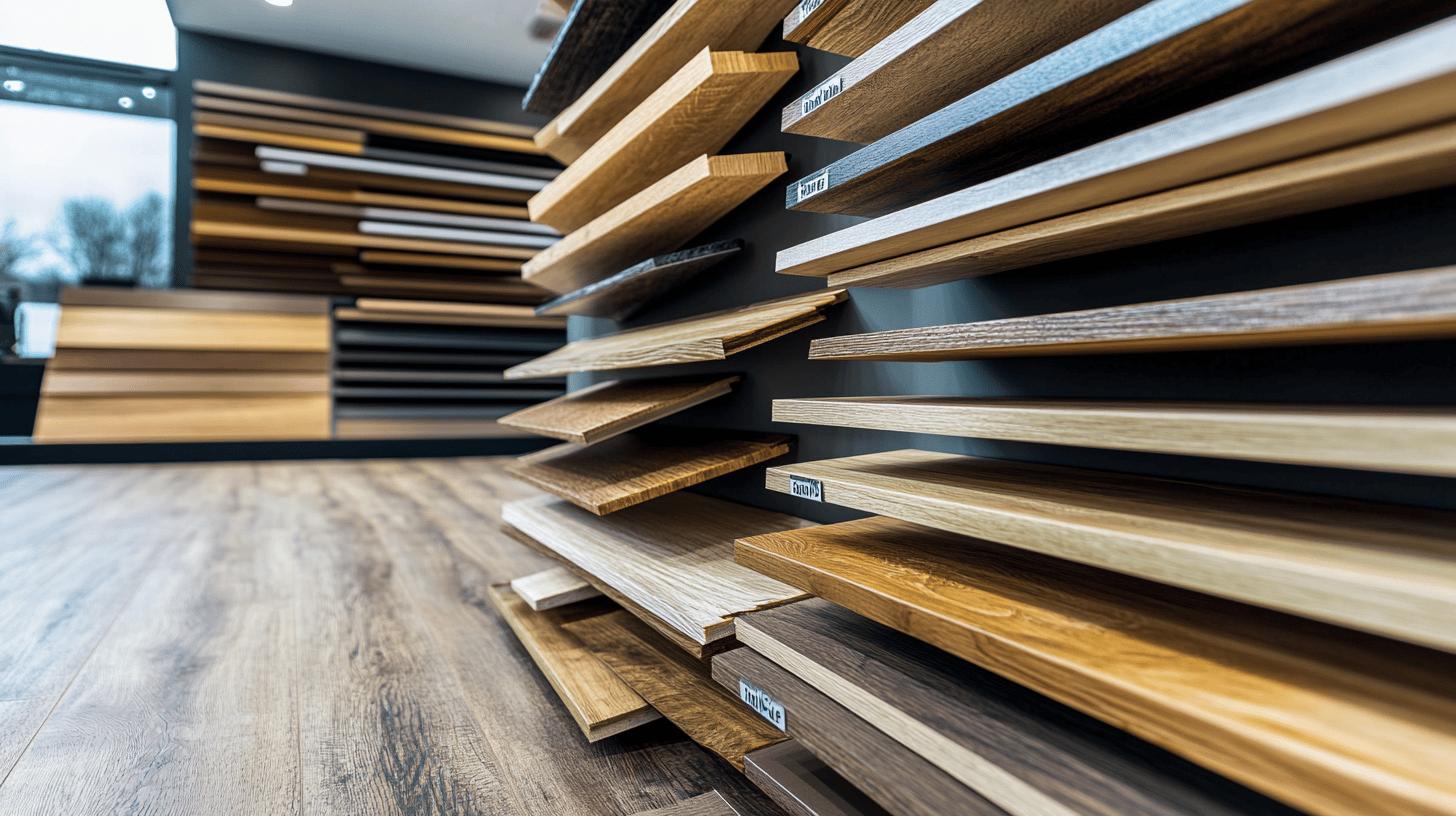
Choosing the right finish for your wooden floors is critical for achieving both the desired look and durability. The finish you select will impact not only the appearance but also the maintenance and longevity of your floors. Therefore, understanding the factors to consider can help you make an informed decision.
Consider Lifestyle and Room Function: One of the primary factors to consider is the function of the room and the level of foot traffic it will endure. High-traffic areas, such as hallways and living rooms, may benefit from more durable finishes like polyurethane or lacquer. These finishes provide a strong protective layer that can withstand wear and tear, making them ideal for busy households or commercial spaces.
Aesthetic Preferences: Different finishes offer varying aesthetic outcomes. Satin, matte, and gloss finishes each provide a unique look. Satin finishes offer a subtle sheen that can hide imperfections, while matte finishes provide a natural, understated appearance. Gloss finishes, on the other hand, deliver a high-shine, polished look that can make a bold statement. Your choice will depend on your personal style and the overall décor of the room.
Maintenance Requirements: Some finishes require more upkeep than others. For instance, oil and wax finishes offer a natural look but require regular maintenance and periodic reapplication to keep the floors looking their best. In contrast, polyurethane finishes, especially water-based ones, are easier to maintain and require less frequent touch-ups. Understanding the maintenance commitment can help you choose a finish that fits your lifestyle.
Environmental Impact: If environmental sustainability is a priority, consider the impact of the finish you choose. Water-based finishes are generally more eco-friendly, emitting fewer volatile organic compounds (VOCs) compared to oil-based finishes. However, water-based options may not be as durable as their oil-based counterparts. Balancing eco-friendliness with durability needs is essential for making a responsible choice.
- Room Function: High-traffic areas need durable finishes like polyurethane or lacquer.
- Aesthetic Preferences: Satin, matte, and gloss finishes offer different looks.
- Maintenance Requirements: Oil and wax finishes need regular upkeep; polyurethane is easier to maintain.
- Environmental Impact: Water-based finishes are more eco-friendly but may be less durable than oil-based ones.
Maintenance and Longevity of Wood Floor Finishes
Proper maintenance is crucial for extending the longevity and preserving the appearance of wooden floor finishes. Each type of finish has unique maintenance requirements that must be followed to ensure optimal performance. Understanding these wooden floor repair and maintenance requirements can help you maintain the beauty and durability of your floors for years to come.
Regular cleaning and wood floor restoration are essential for all finishes. Using appropriate cleaners tailored to the specific type of finish can prevent damage and maintain the floor’s appearance. For example, water-based polyurethane finishes should be cleaned with a pH-neutral cleaner to avoid damaging the surface, while oil-based finishes can handle slightly more robust cleaning solutions. Avoid using abrasive tools or harsh chemicals that can wear down the finish over time.
Reapplication is necessary for certain finishes, such as oil and wax, which require periodic reapplication to maintain their protective qualities and aesthetic appeal. Oil finishes, in particular, need more frequent reapplication to keep the wood nourished and prevent drying out. Lacquer and polyurethane finishes, on the other hand, are more durable but may require sanding and reapplication if they become damaged. Regular inspections can help identify areas needing touch-ups before the damage becomes extensive.
Maintaining the long-term protection of your wood floors involves more than just cleaning and reapplication. It includes addressing damage promptly. Oil finishes are easier to touch up, allowing for spot repairs without needing to refinish the entire floor. Lacquer finishes, however, may require more extensive repairs, including sanding and reapplication to restore their appearance. Regular maintenance not only preserves the finish but also extends the life of the wood itself, ensuring that your floors remain beautiful and durable over time.
- Regular Cleaning: Use appropriate cleaners for different finishes to avoid damage.
- Reapplication: Oil and wax finishes need periodic reapplication to maintain protection.
- Repairing Damage: Oil finishes are easier to touch up; lacquer finishes may need sanding and reapplication.
- Long-term Protection: Regular maintenance prolongs the life of both the finish and the floor.
Cost and Environmental Impact of Wood Floor Finishes
When selecting a wood floor finish, understanding the financial implications is crucial. The initial cost of a finish can vary significantly, depending on the type and quality. However, it’s essential to consider the long-term maintenance costs as well. For instance, while oil finishes may be less expensive upfront, they require more frequent maintenance and reapplication, which can add up over time. In contrast, more durable finishes like polyurethane might have a higher initial cost but offer long-term savings due to their longevity and reduced need for touch-ups. Durable finishes are particularly cost-effective for high-traffic areas, where frequent wear and tear could necessitate more frequent refinishing with less robust options.
The environmental impact of wood floor finishes is another critical factor to consider. Volatile Organic Compounds (VOCs) are a primary concern, as they contribute to indoor air pollution and have adverse health effects. Water-based finishes generally emit fewer VOCs compared to oil-based finishes, making them a more eco-friendly choice. They also tend to dry faster and have a less intense odour, enhancing indoor air quality during and after application. However, while water-based finishes are more environmentally sustainable, they may not offer the same durability as their oil-based counterparts, necessitating a balance between eco-friendliness and longevity.
- Initial Cost vs. Long-term Maintenance: Oil finishes are cheaper upfront but require frequent upkeep; polyurethane offers long-term savings.
- VOC Emissions: Water-based finishes emit fewer VOCs, making them more eco-friendly.
- Durability and Cost Savings: Durable finishes like polyurethane are more cost-effective over time, especially in high-traffic areas.
Expert Recommendations and User Reviews
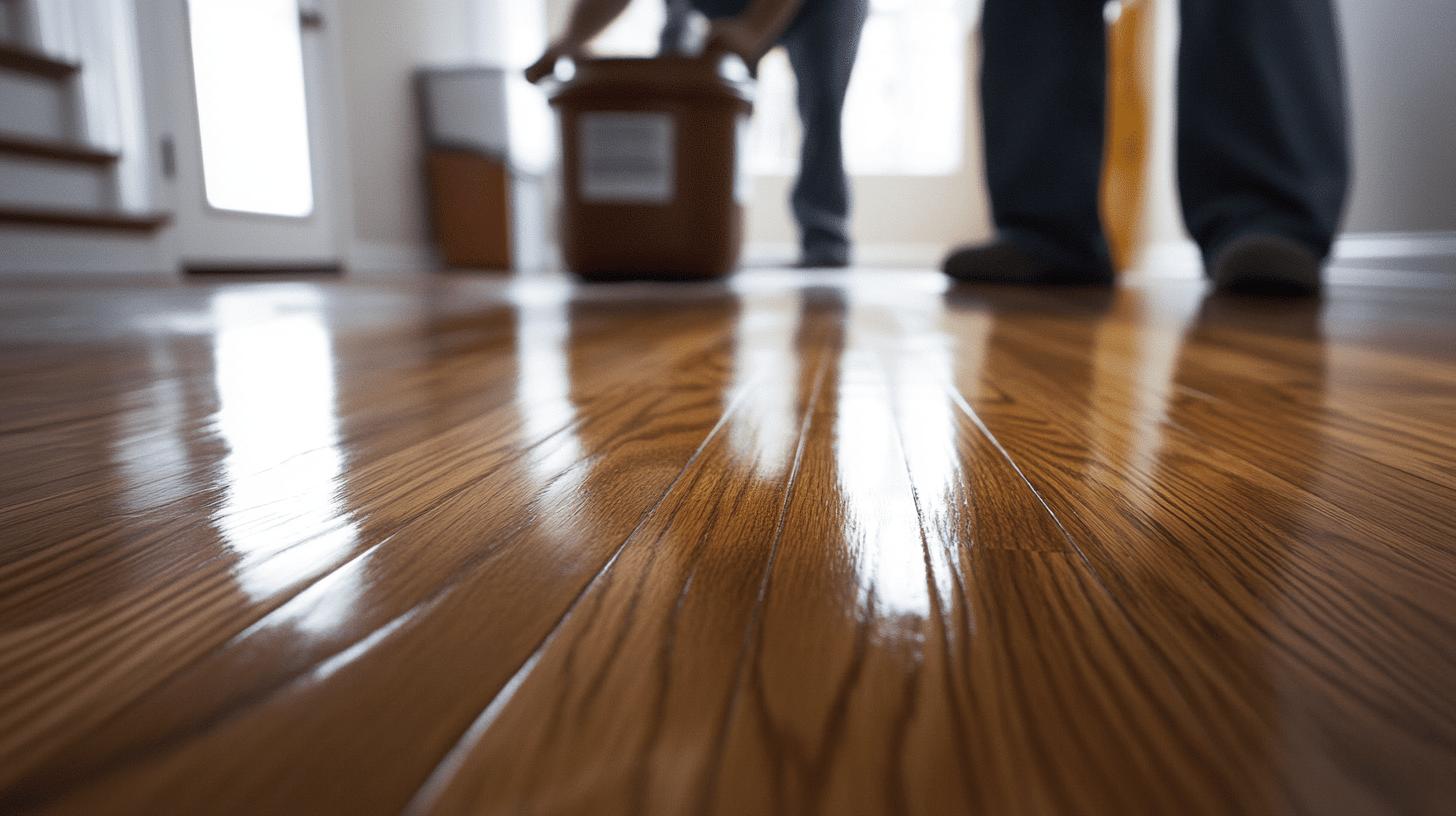
Ryan’s Restoration is highly recommended for professional wood floor finishes across the UK. Known for their expertise and attention to detail, they offer a range of finishing options tailored to the specific needs of both commercial and domestic clients. Their skilled team ensures that each project is executed to the highest standard, resulting in beautiful, long-lasting wooden floors.
User reviews consistently praise the durability, appearance, and ease of maintenance of the finishes applied by Ryan’s Restoration. Customers frequently highlight the transformative effect of their work, noting how the finishes enhance the natural beauty of the wood while providing robust protection against wear and tear. Positive feedback also underscores the company’s professionalism and commitment to customer satisfaction, making them a trusted choice for wood floor finishing.
- Professional Application: Ensures optimal results and longevity.
- Durability: High-quality finishes that withstand daily wear and tear.
- Aesthetic Appeal: Enhances the natural beauty of wooden floors.
Final Words
In the action of exploring Which Finish is Best for Your Wooden Floors?, this guide examined different types of wooden floor finishes, detailed their pros and cons, and provided advice on choosing the right finish. It also covered maintenance practices and assessed the cost and environmental impact.
Choosing the appropriate finish ensures the longevity and aesthetics of your wooden floors. Regular maintenance can significantly extend the life of the finish.
Ultimately, an informed decision will enhance your home’s beauty and value.
Get expert advice on the perfect finish for your wooden floors – Contact Ryan’s Restoration today!
FAQ
What is the most popular finish for hardwood floors?
The most popular finish for hardwood floors is polyurethane. It offers high durability, excellent protection, and comes in both oil-based and water-based forms.
Is it better to oil or varnish a wood floor?
Choosing between oil and varnish depends on preferences. Oil finishes provide a natural look and are easy to maintain but require frequent reapplication. Varnish offers a harder, more durable surface but is more difficult to repair.
Is it better to varnish or wax floors?
Varnishing provides a long-lasting, durable finish suitable for high-traffic areas. Waxing offers a softer, more natural look but requires more regular maintenance and reapplication.
What is the best treatment for a wooden floor?
The best treatment for a wooden floor varies. Polyurethane is durable and long-lasting. Hardwax oil offers a natural look with good water resistance, while lacquer provides a high-gloss finish but less durability.
